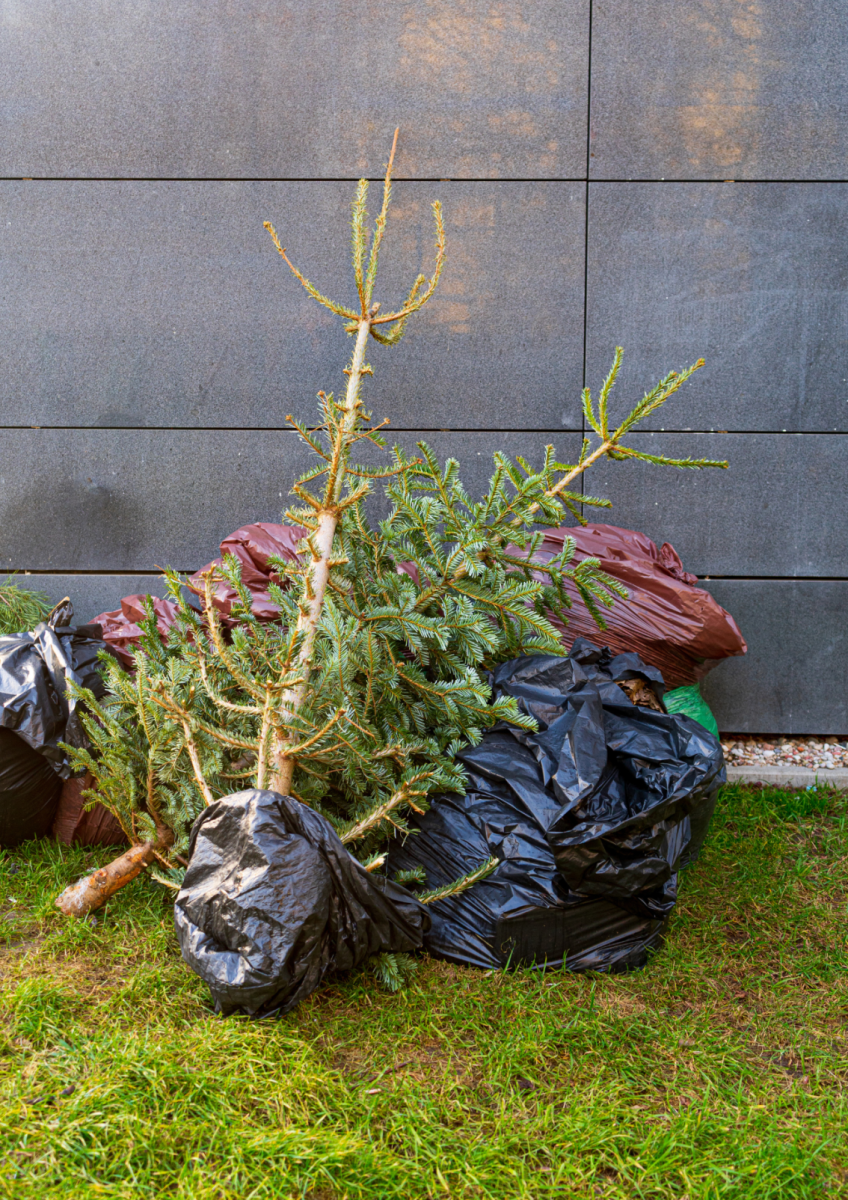During the holiday season, many celebrations take place in the U.S. for holidays such as Christmas, New Year, Hannukah, Quanza. However, along with these celebrations comes an increase in waste. According to an article from Roadrunner, a company website focused on bringing road waste to zero, “Americans toss 25% more trash,” during the holiday season, which accounts for “an additional one million tons of waste every week.” Although celebrating these holidays is important and a major part of cultures in the U.S., doing so in a way that creates less waste would be beneficial for everyone.
Oftentimes when people think of the holidays in the U.S., a major event that comes to mind is the giant ball drop that takes place in Times Square in New York City to celebrate New Year’s. What doesn’t come to mind is the amount of trash produced in the process, with a total of 50 tons of trash and an additional 3,000 pounds of confetti left in the streets of New York City in just one night, according to HuffPost. That’s enough confetti to cover roughly 1 and a half basketball courts. Celebrating the holidays can be done without so much excess, without so much trash, and possibly detracts from the reasons why the holidays are being celebrated to begin with. The colorful graffiti, bright lights, and over-the-top festivities aren’t needed to enjoy and celebrate the holidays and just generate more waste for sanitary workers to have to clean up. Another article written by the AMNY, the am New York Metro daily newspaper for New York, writes about the 246 sanitary workers that were needed to clean up the streets in the 2016-2017 New Year’s Celebration.
Taking a look at the entire population of the U.S. as a whole, in December alone, Americans generate 36 more pounds of waste per person than in any other month of the year. Contributing to this increase in waste include wrapping paper, ribbons, food waste, and unwanted gifts. According to statistics from the blog “Simplify the Holidays” Simplifytheholidays.com, “More than $8.3 billion is estimated to be wasted on unwanted gifts each year according to a 2022 report.”. With so much money being spent on gifts that are most likely discarded, many questions come to mind regarding the traditions of the holidays. Simple things like watching how much you spend or reusing old wrapping paper can help reduce waste production by great amounts.
The holidays are a time of celebration where people of all cultures can celebrate their holidays and enjoy a time of peace. However, in their celebrations, it is important to remember why people celebrate the holidays. It is important to focus more on traditions, and celebrating your culture than going on extravagant holiday shopping sprees, and taking time to think about how much of the flashy lights and decorations are needed to enjoy the holidays to their fullest. Celebrating the holidays is important and is great fun, however, being mindful of the amount of waste we produce along the way can be equally as important.
So, how do we do it? A major contributor to waste produced, especially in the U.S., is food. Around 30-40% of the food supply in the U.S. goes to waste each year, according to the U.S. Department of Agriculture. That equates to over 70 billion pounds of food filling landfills each year, or 280 million burgers gone to waste. A decent amount of that comes from the holiday season, so keeping leftovers rather than throwing them out can go a long way in reducing food waste.
For those who celebrate Christmas or those who wrap gifts for others, be mindful of wrapping paper. Wrapping paper contributes to 4.6 million pounds of waste, produced almost exclusively during the holiday season, according to an article written by Brightly.eco, a website focused on sustainability. Simply reusing paper or using recyclable wrapping paper can also cut down on the amount of waste significantly.
Regarding energy, according to the same article written by Brightly.eco, holiday lights consume enough energy to power 400,000 homes for a year. Simply turning the lights off at night, or using LED lights instead of incandescent can greatly help reduce energy consumption.

Additionally, the holiday season is one of the peak shipping seasons as well, with surges of online shopping and package delivery occurring in November and December. A UPS Press Release states, “UPS projects holiday returns will peak on January 2, 2020, with 1.9 million returns taking place – a 26 percent increase from last year’s peak returns day.” The same press release also predicts “1.6 million returns per day the week before Christmas.” Such a high volume of returned packages adds to unnecessary waste and pollution. Taking time to think through purchases and being more mindful of the effects of long-distance shipping on the environment can help lower these numbers, and contribute to making the holiday seasons more sustainable.
Remember why we celebrate the holidays. For many, celebrating the holidays is a way for families to get together and spend time together. For others, they focus more on caring for others during the holiday season. No matter the reason you celebrate the holidays, something we should all have in mind during the season is our impact on the environment. Making sure we are not wasteful during the holidays is a small thing that can go a long way, and by just following simple steps, we can all make a difference in making cleaner holidays.







